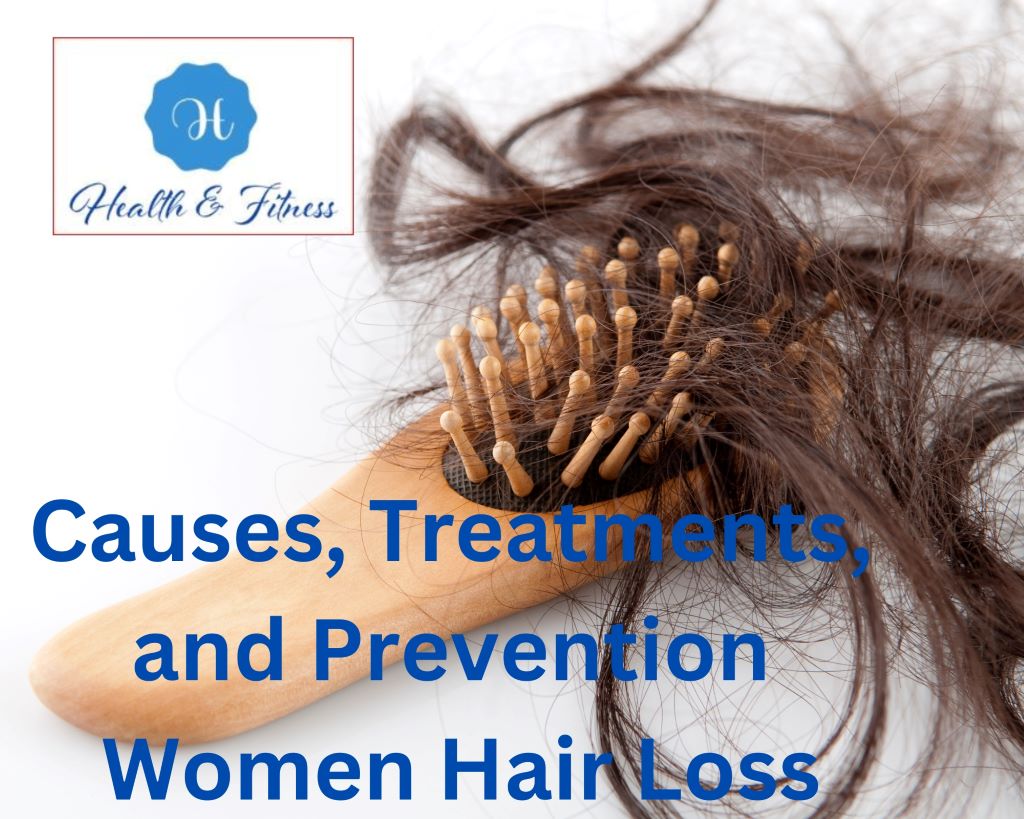An extensive guide to women’s hair loss causes, treatments, and prevention.
The Complete Guide to Understanding Hair Damage in Women: Causes, Treatments, and Ways to Stop It. Hair fall is a common problem affecting women of all ages and can significantly impact their self-esteem and overall quality of life. The American Academy of Dermatology says that up to 40% of women lose their hair by age 40. Many women lose hair because of pregnancy, stress, or medications, but others lose hair because of genetic or medical problems. For healthy hair, women must grasp hair loss causes and treatments. This page discusses female hair loss types, causes, and treatments. Prevention and hair loss management will also be covered.
This piece will teach you about female Baldness and how to treat it.
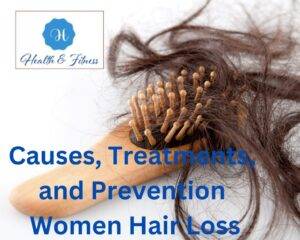
Understanding Hair Loss in Women
It is a common concern among women, and many factors can cause it. Understanding the different hair loss women may experience and the causes and symptoms can help identify the underlying issue and guide treatment.
1- Types of Hair Loss in Women
- Androgenetic Alopecia:
Most women lose hair this way. “Female pattern hair loss” describes it. Genetics starts at puberty.
Women with androgenetic alopecia typically experience thinning hair on the crown and top of the head.
The hair follicles in these areas gradually shrink, leading to weaker and thinner hair strands.
- Telogen Effluvium:
This type of hair loss happens when many hair follicles go into their resting phase, which causes more hair to fall out. Physical or emotional stressors such as surgery, illness, childbirth, or significant weight loss often trigger telogen effluvium. The hair loss typically occurs evenly throughout the scalp, and the hair usually regrows within a few months once we have addressed the underlying cause.
- Alopecia Areata:
This autoimmune condition can cause hair loss in patches on the scalp or other body areas. When the immune system attacks hair cells, alopecia areata results. Hair loss can be sudden, and may occur in small patches or throughout the scalp.
Causes of Female Hair Loss
1- Genetics
As mentioned, female pattern hair loss is a genetic condition inherited from either parent.
A higher risk of hair loss occurs in women with a history of the condition in their families.
2- Hormonal Changes
We can attribute hair loss in women to hormonal changes brought on by things like pregnancy, menopause, or thyroid issues. The hormonal changes can affect the hair growth cycle, causing hair follicles to become weaker and resulting in hair loss.
3- Medical Conditions
Medical conditions such as alopecia areata, lupus, and polycystic ovary syndrome (PCOS) can also cause hair loss in women. It can trigger the immune system to target hair follicles in people with these diseases.
4- Medications
Some medications for women can cause thinning hair or even complete baldness, such as antidepressants, blood thinners, and chemotherapy drugs. Depending on the drug and the patient’s reaction, hair loss may be temporary or permanent.
Symptoms of Female Hair Loss
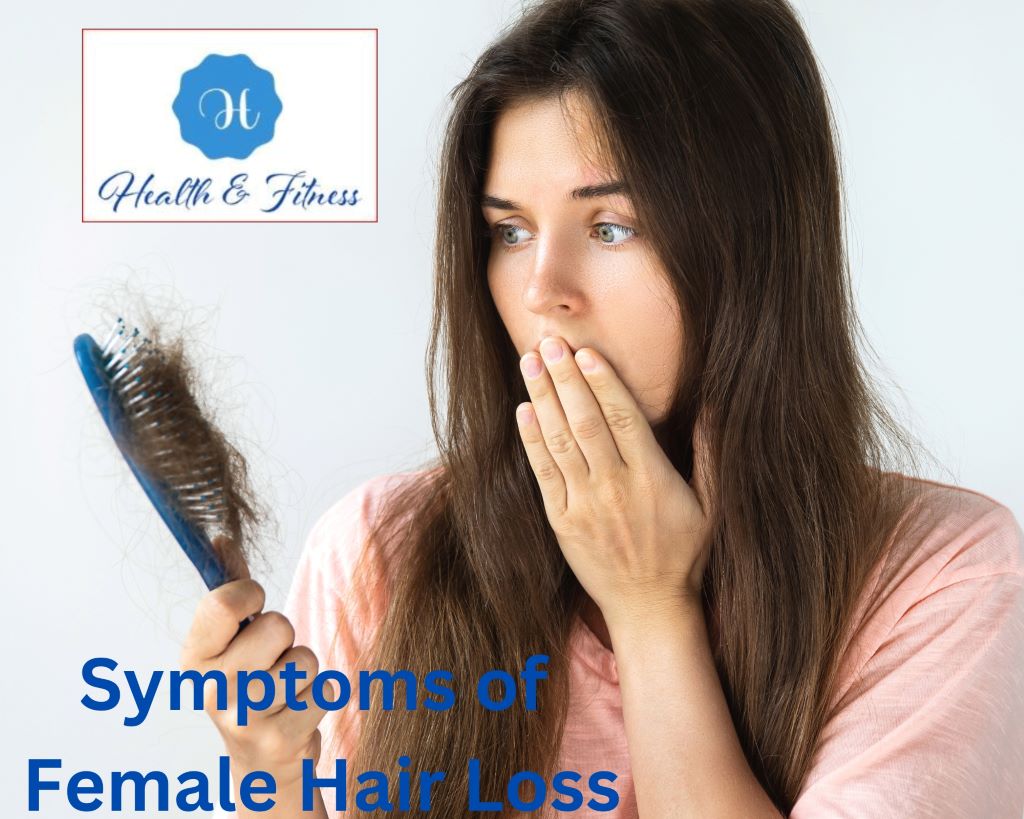
Symptoms of hair loss in women can vary depending on the type and underlying cause of the hair loss. Some common symptoms include:
- Thinning hair on the crown and top of the head
- Increased shedding (telogen effluvium)
- Hair thinning in patches (alopecia areata)
- Brittle or easily breakable hair
- Itching or soreness of the scalp
By understanding the different hair loss, the potential causes, and the symptoms, women can better identify if they are experiencing hair loss and seek treatment. Seeking medical advice early can help address the issue before it becomes severe.
Hair loss complications for women
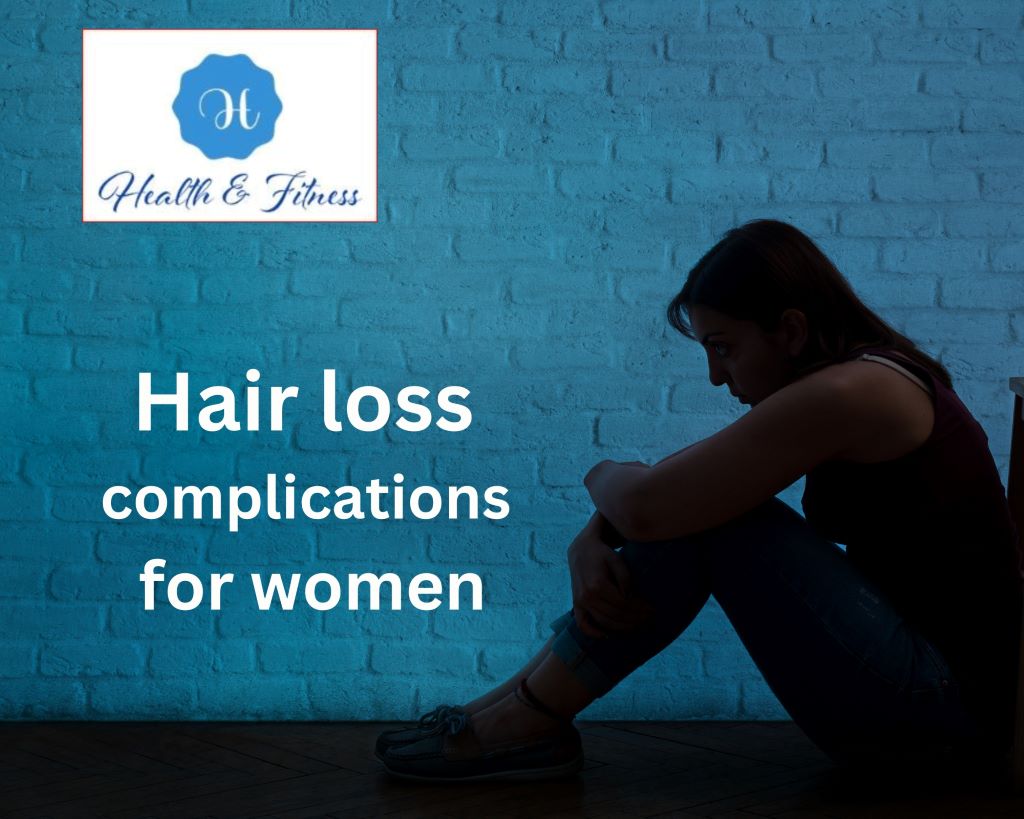
Hair loss can have several complications for women, both physical and emotional. Here are some of the most common complications of hair loss for women:
1- Low self-esteem and confidence
Hair loss can significantly affect a woman’s self-esteem and confidence, particularly if it occurs at a young age.
Women may feel less attractive, feminine, and confident in social and professional situations.
2- Social withdrawal
Women experiencing hair loss may withdraw from social situations, avoiding events and activities that draw attention to their hair loss. This can lead to feelings of isolation and loneliness.
3- Anxiety and depression
Hair loss can trigger anxiety and depression, particularly if associated with a medical condition or a traumatic event.
4-Skins damage:
The scalp may become more susceptible to sun damage and skin irritation when it is exposed because of hair loss.
5- Changes in body temperature
Hair helps to regulate body temperature, so hair loss can cause one to feel colder or overheat more easily.
6-Nutritional deficiencies
In rare cases, hair loss can lead to nutritional deficiencies if the hair loss is caused by an underlying medical condition that affects nutrient absorption.
7- The decreased quality of life
Female pattern baldness is emotionally devastating because it can make a woman feel like she is no longer herself.
It’s important to seek professional help if you are experiencing hair loss and it affects your emotional well-being.
A healthcare provider or mental health professional can provide support and guidance to help you cope with hair loss complications and develop strategies for managing its effects.
Hair Loss Treatments for Women
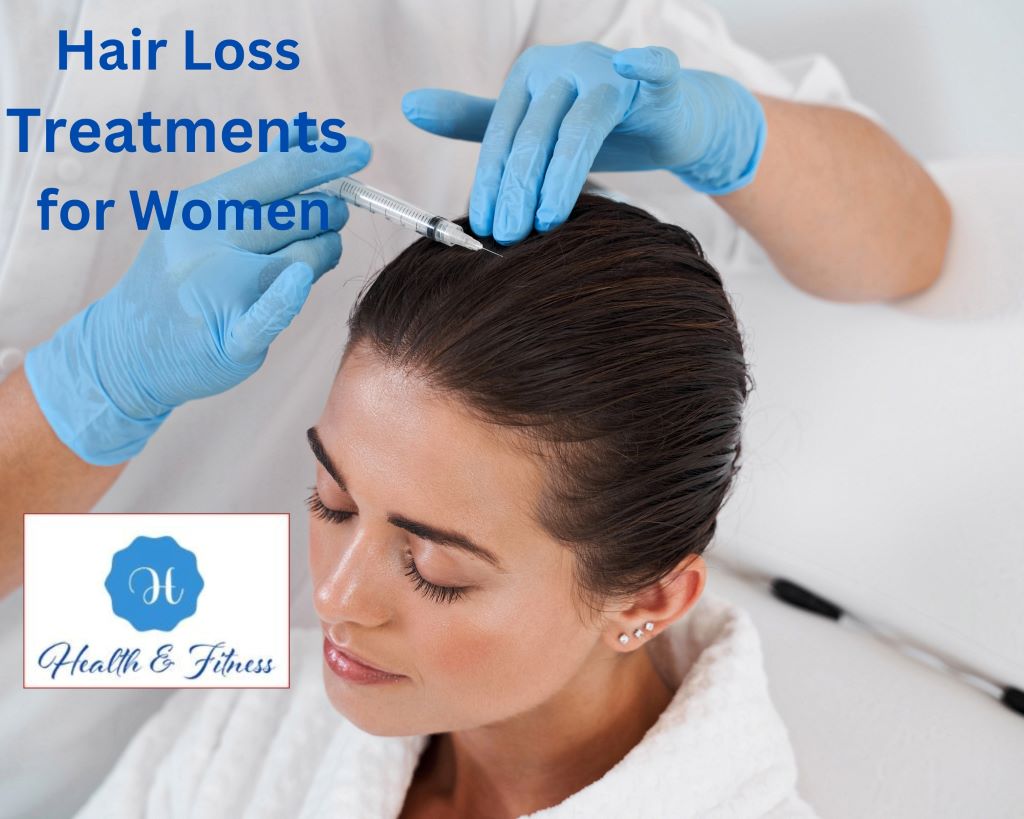
Hair loss can be a frustrating and emotional experience, especially for women. Fortunately, various hair loss treatments are available to help address the issue.
Harvard Health Publishing. “Treating Female Pattern Hair Loss.” https://www.health.harvard.edu/staying-healthy/treating-female-pattern-hair-loss
In this section, we’ll explore some of the most popular Hair damage treatments for women.
1-Medications: Minoxidil and Finasteride
Minoxidil is an FDA-approved medication that is available over the counter in the United States. It comes in a topical solution that is applied directly to the scalp. Minoxidil enhances hair development by boosting circulation to the scalp’s hair follicles. It’s safe and well-tolerated, but it can take several months to see results. Finasteride is another FDA-approved medication, but it’s only available by prescription. It prevents the formation of dihydrotestosterone (DHT), the active form of testosterone that causes hair fall and is administered orally.
We have shown Finasteride to be effective in treating hair fall in men, but its effectiveness in women is unclear. It can also have side effects, such as decreased libido and an increased risk of breast cancer.
In hair transplant surgery, they took hair from a donor site, usually the back of the head, and moved it to areas that are going bald. The transplanted hair will continue to grow in its new location, providing a permanent solution to hair loss. It is safe and effective, but can be expensive and require multiple sessions.
2- Platelet-rich plasma (PRP) therapy
PRP therapy, in which the patient’s platelet-rich plasma is injected into the head, is a novel approach to treating hair loss. The theory behind PRP therapy is that the growth factors in the plasma can stimulate hair growth. While there is limited research on the effectiveness of PRP therapy for hair loss, there have been some encouraging findings from research.
3- Laser therapy
Laser therapy involves using low-level laser light to stimulate hair growth. It’s safe and painless and can be done at home using a handheld device or clinical setting. There is preliminary evidence that laser therapy for hair loss can be effective, but more study is required to establish its long-term efficacy.
4- Topical treatments and supplements
There are a variety of topical treatments and supplements available that claim to promote hair growth. These include shampoos, conditioners, and serums that contain ingredients like biotin, caffeine, and saw palmetto.
While some of these products may help improve hair’s appearance, there is limited scientific evidence to suggest that they can promote hair growth. In conclusion, various Hair damage treatments are available for women.
The most effective treatment will depend on the underlying cause of the hair fall and the individual patient’s needs and preferences. It’s important to talk to a healthcare provider or a hair loss specialist to determine the best course of action for your specific situation.
Hair Loss in Women: Prevention
Loss of hair is a common problem for women of all ages. While various Baldness treatments are available, prevention is always better than a cure. In this section, we’ll explore some of the most effective ways to prevent hair loss in women.
1-Nutrition and diet
Eating a balanced and nutritious diet can help hair grow healthily. They are hair up of protein, so it is important to ensure you get enough protein in your diet. Protein sources include lean meats, fish, eggs, and plant-based sources like beans, nuts, and seeds. Iron is also important for hair health, as iron deficiency can lead to hair loss. Sources of iron include red meat, poultry, fish, leafy greens, and fortified cereals. Biotin, a B vitamin, is also important for healthy hair growth. Foods that are rich in biotin include eggs, nuts, and seeds. Vitamins A, C, and D are also important for hair health, so include plenty of fruits, vegetables, and dairy or non-dairy milk alternatives in your diet.
2- Stress management
Stress can hurt hair health, disrupting the normal hair growth cycle and leading to Hair damage. Stress management techniques like meditation, yoga, or deep breathing can help reduce stress and promote hair health. Regular exercise can also help reduce stress and improve overall health.
3- Hair care practices
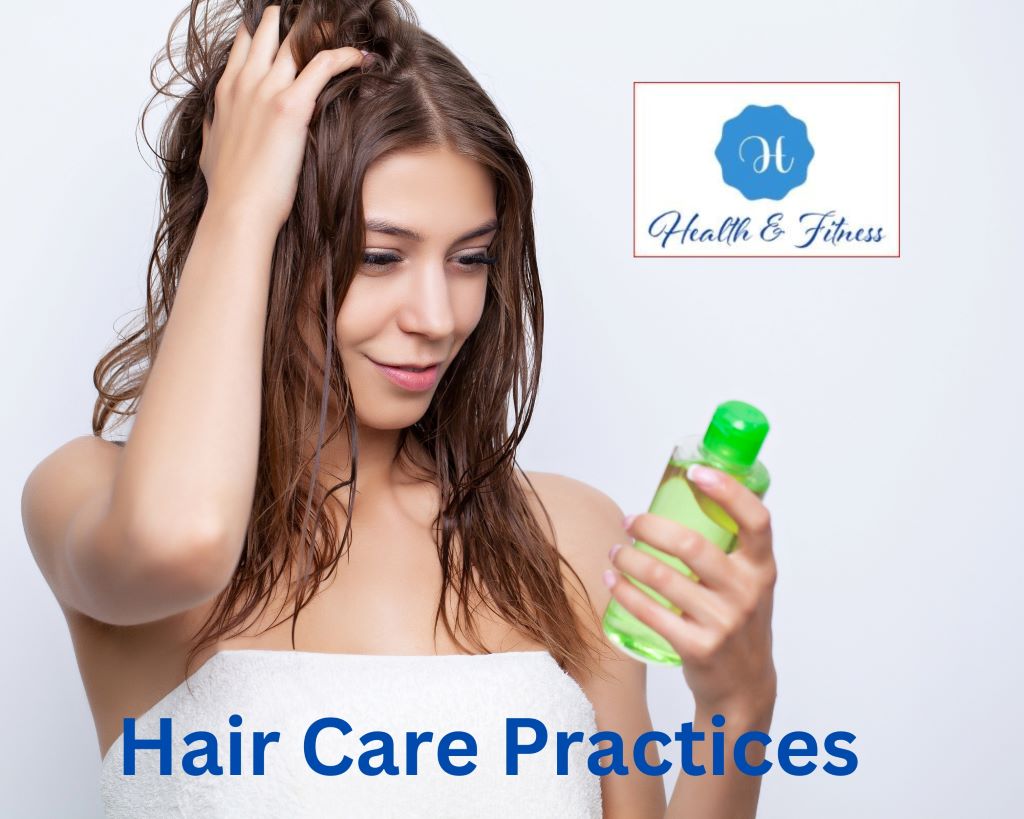
Certain hair care practices can contribute to hair loss, such as excessive heat styling, harsh chemical treatments, and tight hairstyles that pull on the hair. To help prevent Hair damage, it’s important to be gentle with your hair and avoid practices that can cause damage. Avoid using heat-styling tools like flat irons and curling irons daily. If you use them, use a heat-protectant spray. Avoid harsh chemical treatments like bleaching, coloring, and perming. If you must color your hair, use a gentle, ammonia-free dye. Avoid tight hairstyles like braids, cornrows, and tight ponytails that can pull on the hair and cause breakage. Choose looser styles that are gentler on the hair.
4- Lifestyle changes
Certain lifestyle factors can also contribute to hair loss, such as smoking and excessive alcohol consumption. Smoking can constrict blood vessels and reduce blood flow to the scalp, leading to Hair damage. Excessive alcohol consumption can dehydrate the body and impact hair health. Quitting smoking and reducing alcohol intake can help to promote overall health and improve hair health. Besides these preventative measures, certain Hair damage treatments can help to slow or reverse the effects of hair fall. These treatments include laser therapy, platelet-rich plasma (PRP), medicines, topical therapies, and supplements. In conclusion, preventing hair loss in women requires a comprehensive approach that involves nutrition and diet, stress management, hair care practices, and lifestyle changes. These steps can help women get healthy hair and keep it from falling out.
Talk to your doctor or a specialist in hair loss to find out why you’re losing hair and the best treatment. Healthy, gorgeous hair can last a lifetime with proper care.
Coping with Hair Loss
Coping with hair fall can be difficult and emotional, particularly for women who often associate their hair with their femininity and beauty. In this part, we’ll talk about the emotional and mental effects of Baldness, as well as some ways to deal with it and where to find help.
1- Effects of hair loss on your emotions and mind
Baldness can significantly impact a woman’s self-esteem and body image. It can lead to feelings of sadness, anxiety, and even depression. Some women may feel like they have lost a part of their identity or femininity and may experience a loss of confidence and self-worth. These emotions are normal, and it’s important to acknowledge and address them.
2- Support groups and resources
One of the best things a woman can do to deal with Hair damage is to talk to other women who have been through something similar. Many support groups and resources, both in-person and online, can provide a safe and supportive space for women to share their experiences and connect with others who understand what they are going through. Some organizations, such as the American Hair Fall Association and the National Alopecia Areata Foundation, provide educational resources and information about hair fall treatments.
3 Tips for boosting confidence and self-esteem
While coping with hair fall can be challenging, several strategies can help women boost their confidence and self-esteem. Here are some tips:
- Experiment with new hairstyles:
While you may not achieve the hairstyle you had before your hair loss, trying out new hairstyles can help to give you a fresh and updated look that you feel confident in.
- Use accessories:
Accessories like scarves, hats, and headbands can help make a statement and add personality to your look.
- Practice self-care:
Taking care of yourself and your body can help boost your confidence and self-esteem. This can include eating a healthy diet, exercising regularly, and practicing stress management techniques like meditation or yoga.
- Seek professional help:
If you are struggling with hair loss’s emotional or psychological effects, consider seeking professional help from a therapist or counsellor who works with individuals experiencing hair fall. Coping with Hair damage can be a challenging and emotional process, but it’s important to remember that you are not alone. Seeking support from others who have experienced similar challenges, experimenting with new hairstyles and accessories, practicing self-care, and seeking professional help when needed can all help to boost confidence and self-esteem. Remember that hair loss does not define your beauty or worth and that there are many ways to feel beautiful and confident, no matter what your hair looks like.
Conclusion
We’ve examined women’s hair loss causes and remedies. Key takeaways:
Genetics, hormones, and medical factors can cause Hair damage in women.
- Hair fall can be distressing, but many treatments can slow or cure it.
- Minoxidil, finasteride, hair transplants, and PRP therapy are helpful treatments for female hair loss.
- Diet, stress control, hair care, and lifestyle changes can prevent hair fall in women.
Support from others and self-care can boost confidence and self-esteem when dealing with hair fall.
See a doctor or mental health expert for support if hair fall affects your mental health. Remember that Hair damage does not define your beauty or value, and there are many ways to feel beautiful and confident regardless of your hair.

